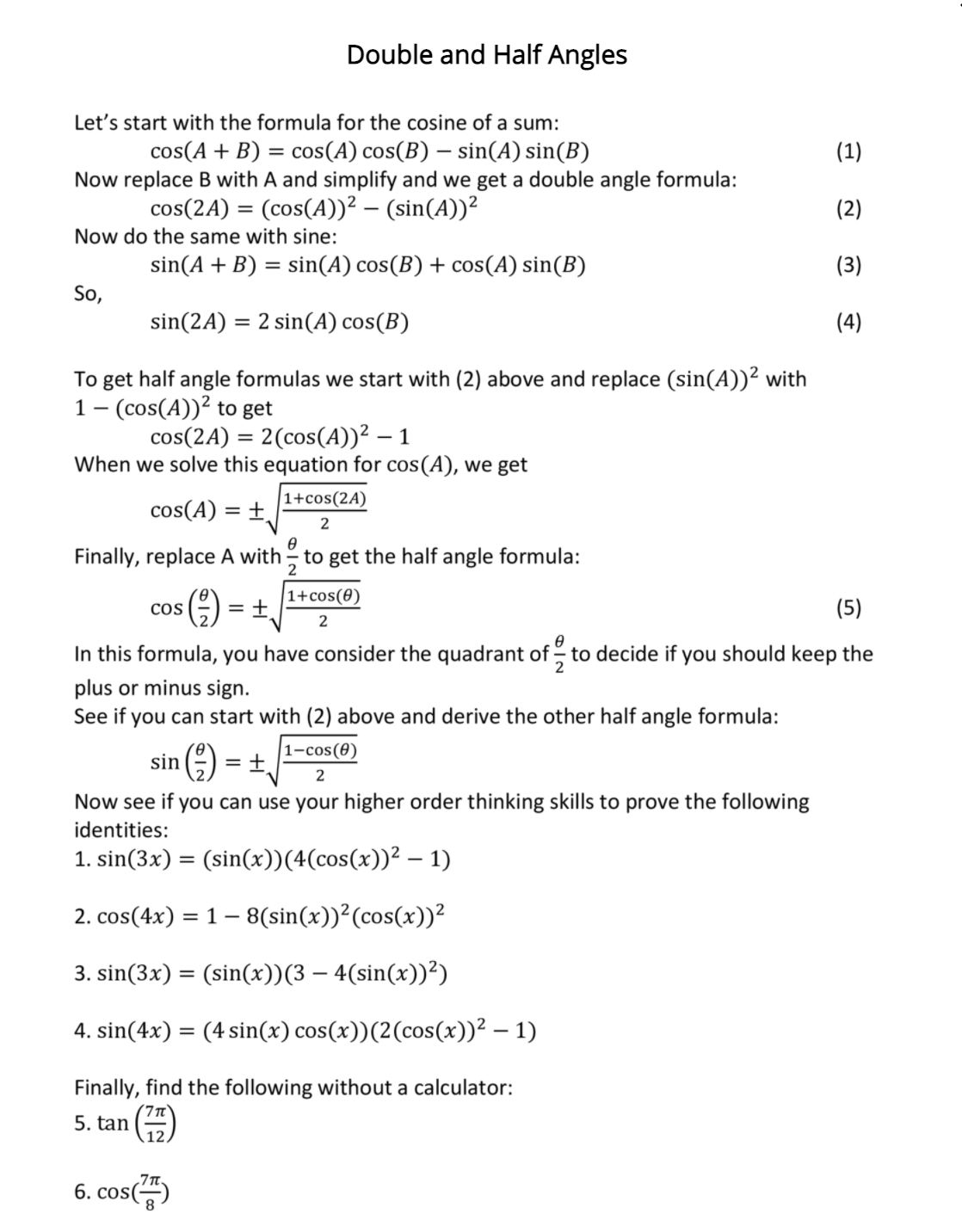6. cos( 8.
Mathematics For Machine Technology
8th Edition
ISBN:9781337798310
Author:Peterson, John.
Publisher:Peterson, John.
Chapter82: Control Systems, Absolute Positioning, Incremental Positioning
Section: Chapter Questions
Problem 5A
Related questions
Question
#6 in image

Transcribed Image Text:Double and Half Angles
Let's start with the formula for the cosine of a sum:
cos(A + B) = cos(A) cos(B) – sin(A) sin(B)
Now replace B with A and simplify and we get a double angle formula:
(1)
cos(2A) = (cos(A))² – (sin(A))²
(2)
Now do the same with sine:
sin(A + B) = sin(A) cos(B) + cos(A) sin(B)
(3)
So,
sin(2A) = 2 sin(A) cos(B)
(4)
To get half angle formulas we start with (2) above and replace (sin(A))² with
1- (cos(A))? to get
cos(2A) = 2(cos(A))² –
When we solve this equation for cos(A), we get
|1+cos(2A)
cos(A) =
Finally, replace A with - to get the half angle formula:
|1+cos(0)
Cos
= +
(5)
2
In this formula, you have consider the quadrant of - to decide if you should keep the
plus or minus sign.
See if you can start with (2) above and derive the other half angle formula:
|1-cos(0)
sin
Now see if you can use your higher order thinking skills to prove the following
identities:
1. sin(3x) = (sin(x))(4(cos(x))² – 1)
2. cos(4x) = 1– 8(sin(x))²(cos(x))²
3. sin(3x) = (sin(x))(3 – 4(sin(x))²)
4. sin(4x) = (4 sin(x) cos(x))(2(cos(x))² – 1)
Finally, find the following without a calculator:
5. tan
6. cos()
Expert Solution
This question has been solved!
Explore an expertly crafted, step-by-step solution for a thorough understanding of key concepts.
Step by step
Solved in 3 steps

Recommended textbooks for you

Mathematics For Machine Technology
Advanced Math
ISBN:
9781337798310
Author:
Peterson, John.
Publisher:
Cengage Learning,

Algebra & Trigonometry with Analytic Geometry
Algebra
ISBN:
9781133382119
Author:
Swokowski
Publisher:
Cengage

Algebra and Trigonometry (MindTap Course List)
Algebra
ISBN:
9781305071742
Author:
James Stewart, Lothar Redlin, Saleem Watson
Publisher:
Cengage Learning

Mathematics For Machine Technology
Advanced Math
ISBN:
9781337798310
Author:
Peterson, John.
Publisher:
Cengage Learning,

Algebra & Trigonometry with Analytic Geometry
Algebra
ISBN:
9781133382119
Author:
Swokowski
Publisher:
Cengage

Algebra and Trigonometry (MindTap Course List)
Algebra
ISBN:
9781305071742
Author:
James Stewart, Lothar Redlin, Saleem Watson
Publisher:
Cengage Learning